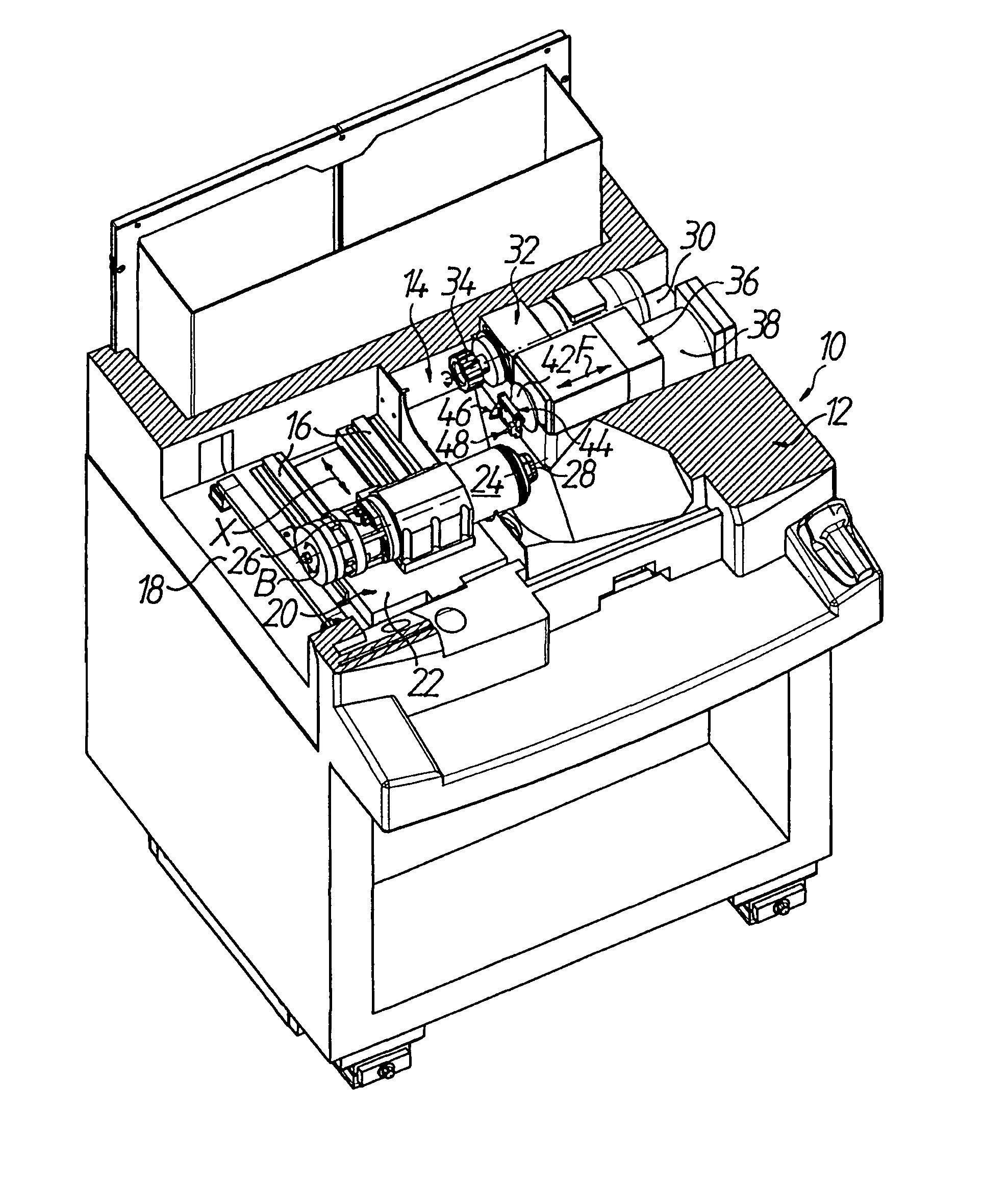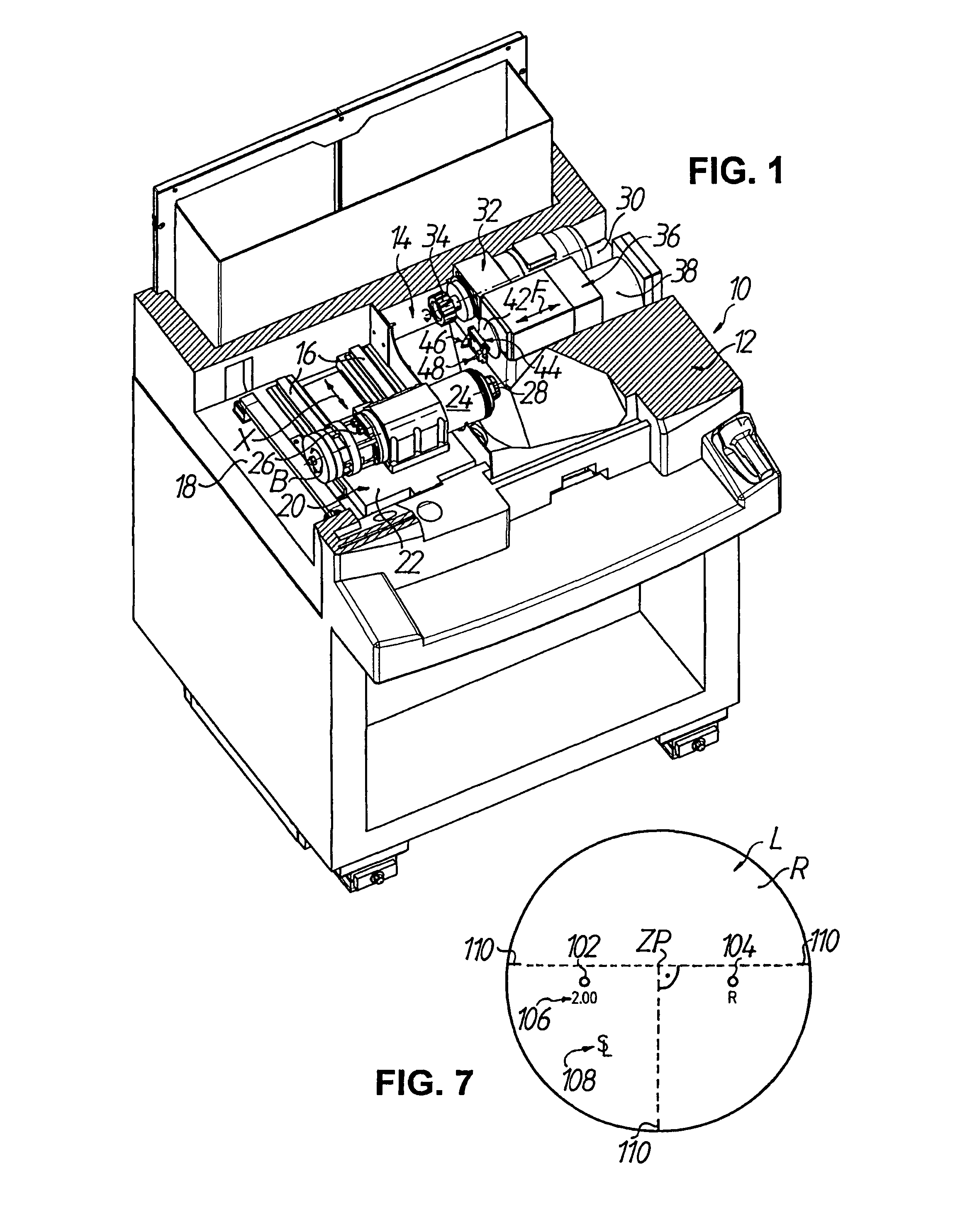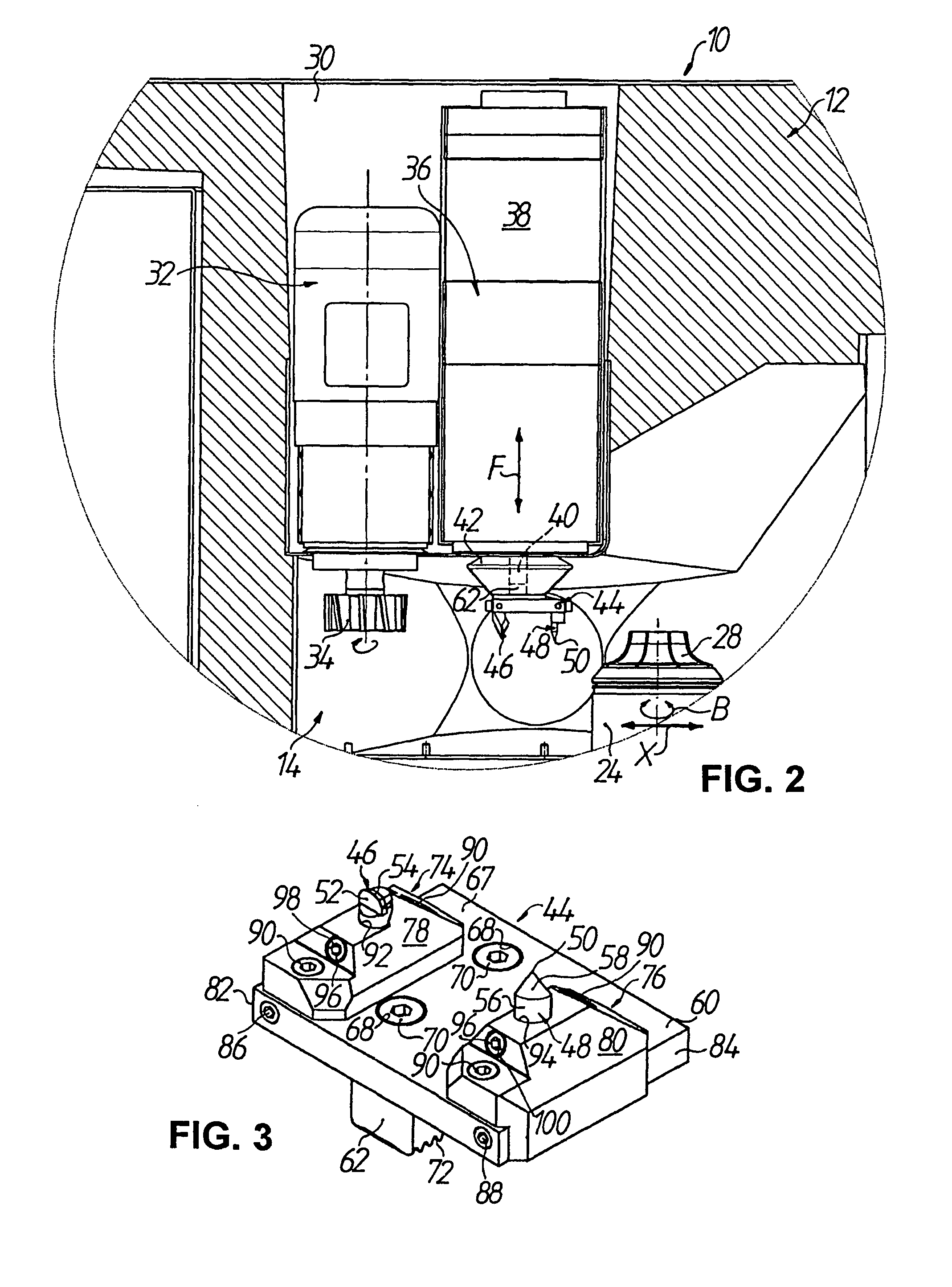Machine for machining optical workpieces, in particular plastic spectacle lenses
a technology for optical workpieces and plastic spectacle lenses, which is applied in the field of plastic spectacle lenses, can solve the problems of unfavorable engraving, “dulling” of engraving images, etc., and achieve the effect of simple replacement and easy replacement of engraving tools
- Summary
- Abstract
- Description
- Claims
- Application Information
AI Technical Summary
Benefits of technology
Problems solved by technology
Method used
Image
Examples
Embodiment Construction
OF EMBODIMENTS
[0039]FIGS. 1 and 2 schematically show a CNC-controlled machine 10 in particular for the surface machining of spectacle lenses L made of plastic (see FIG. 7), in which the machine frame 12 which is cast in one piece from a polymer concrete is cut away in the region of the machine upper part in order to make it possible to see into a working space or machining area 14 of the machine 10. The machine 10 as such, without the engraving function, has already been described in the earlier German patent application DE 10 2005 021 638 A1 by the same Applicant, to which reference is additionally made here with regard to the basic structure of the machine and the function thereof.
[0040]On the left-hand side of the machining area 14 in FIG. 1, two guide rails 16 which extend parallel to one another in a (horizontal) width direction of the machine 10 are fixed to an upper mounting surface 18 of the machine frame 12 in FIG. 1. An X-carriage 20, which can be moved in a CNC-controlled...
PUM
| Property | Measurement | Unit |
|---|---|---|
| distance | aaaaa | aaaaa |
| angle | aaaaa | aaaaa |
| frequencies | aaaaa | aaaaa |
Abstract
Description
Claims
Application Information
 Login to View More
Login to View More - R&D
- Intellectual Property
- Life Sciences
- Materials
- Tech Scout
- Unparalleled Data Quality
- Higher Quality Content
- 60% Fewer Hallucinations
Browse by: Latest US Patents, China's latest patents, Technical Efficacy Thesaurus, Application Domain, Technology Topic, Popular Technical Reports.
© 2025 PatSnap. All rights reserved.Legal|Privacy policy|Modern Slavery Act Transparency Statement|Sitemap|About US| Contact US: help@patsnap.com



